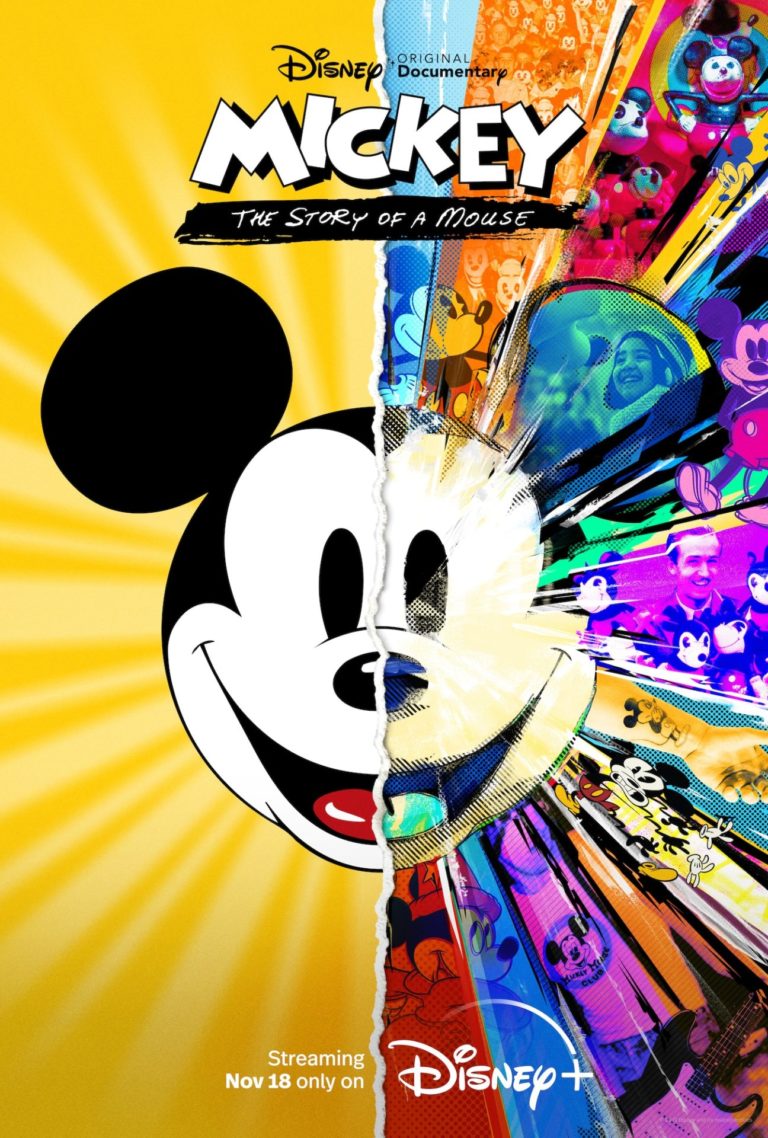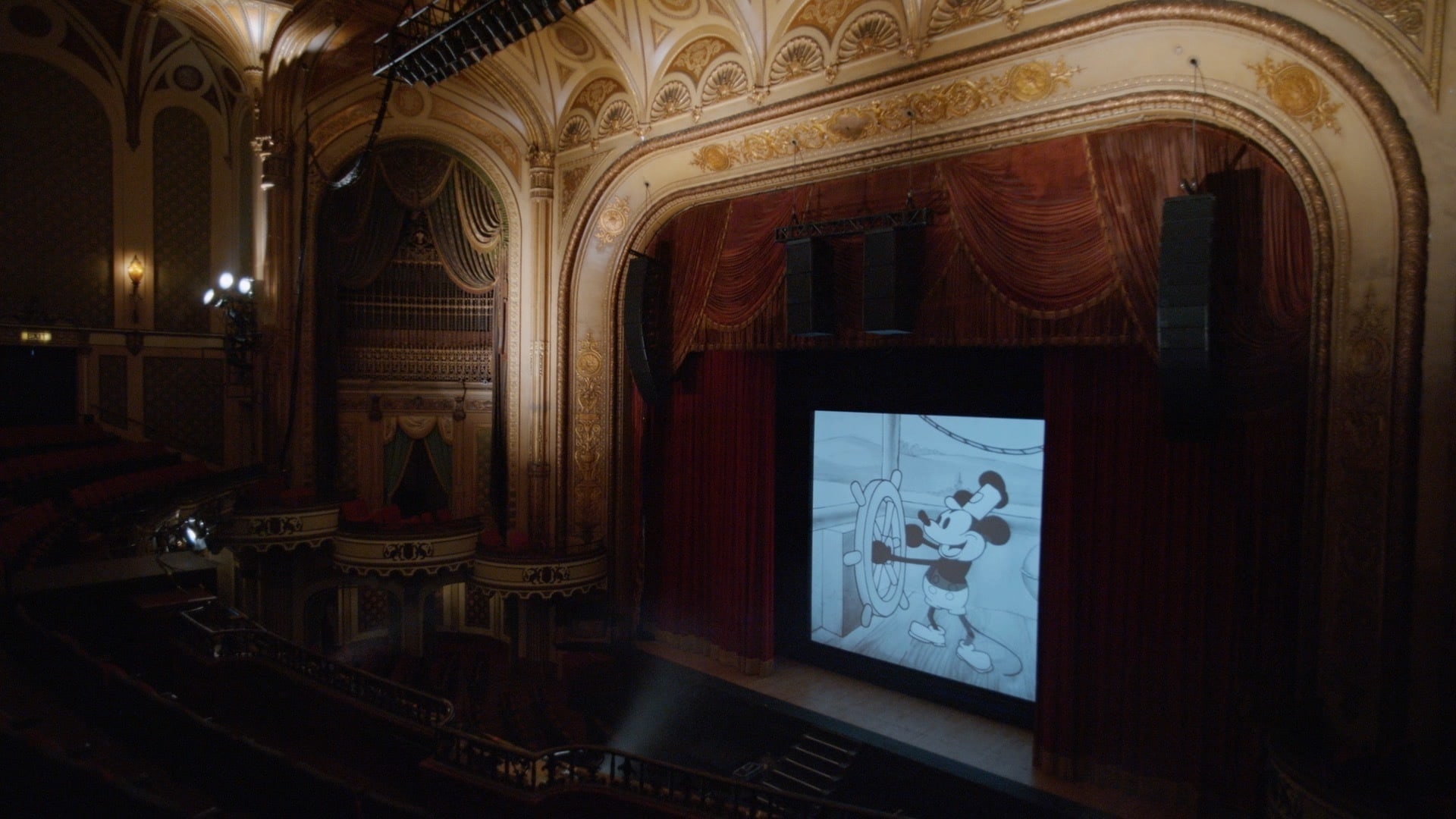
“It was all started by a mouse,” are the famous words pronounced by Walt Disney when describing his career as an animator. The documentary directed by Jeff Malmberg and produced by Oscar-winning Morgan Neville, Mickey: The Story Of A Mouse, takes us back to the origins of that glorious character and his evolution through the course of time. The film that had its world premiere at the South by Southwest Film Festival will be available on Disney+.
The life and ventures of Mickey Mouse intertwine old animated drawings with interviews to distinguished members who have worked (or still work) for the Walt Disney company. These include the contributions of animation artist Floyd Norman, art historian Dr. Carmenita Higginbotham and producer Meghan Walsh.
The documentary chronicles the myth-making of this extraordinary character who still resonates in the hearts of people worldwide. Whether his image appeared during the Macy’s Thanksgiving Parade in 1934 or in the 2022 procession at Disneyland, Mickey Mouse is the recognised symbol of joy and wonderment.

Mickey: The Story Of A Mouse takes us back to when the animated mouse — who typically wears red shorts, large yellow shoes, and white gloves — was co-created in 1928 by Walt Disney and Ub Iwerks. It was in the late thirties that animator Fred Moore redesigned the popular character making his appearance the one we are most commonly acquainted with today. Initially the anthropomorphic mouse was supposed to be called Mortimer, but apparently Walt’s wife, Lillian Disney, suggested the name Mickey. He was created as a replacement for a prior Disney character, Oswald The Lucky Rabbit, and made his first public debut in the short film Steamboat Willie. The rest is history.
Mickey Mouse became a movie star, of the same magnitude of Douglas Fairbanks and Charlie Chaplin. In his early days he had a sense of adventure and soon became a sensation, with merchandise spreading everywhere that allowed to save companies that were disappearing.
The animated mouse has gone through a metamorphosis, decade after decade he has evolved in unison with society. The free-spirited character became the emblem of propriety to the point that many taboos were thrust upon him and thus Donald Duck came to life as the more mischievous of Disney characters. Before World War II Mickey Mouse was loved worldwide, also by dictators like Hitler, Mussolini and Hirohito, who eventually banned him once they realised the character was the epitome of independence and liberty.
As time went by Mickey was also embraced by counterculture and revolutionary artists. Graphic designer Milton Glaser made the 1968 film Mickey Mouse In Vietnam to denounce the war of those years; later Mickey was adopted by the disco and punk movement, even Andy Warhol incorporated him in their work. But in the early 2000s the mouse was relegated to a mere corporate symbol.
However in recent years the original spirit of the inspiring mouse has been retrieved and — to tribute his life-long enterprises — Eric Goldberg, Mark Henn and Randy Haycock have created Mickey In A Minute to celebrate his most emblematic moments.
Mickey: The Story Of A Mouse delves into the power behind this character by examining the way he moves and behaves. Mickey Mouse’s movement defines his individuality. He emerged during the Roaring Twenties, that were soon followed by the Great Depression. Through that period of crisis he was a beacon of faith for better times, for children and adults alike. He became a symbol of resilience, perseverance, survival and pursuit of the American Dream. This is expressed also in the shapes that define him. Mickey Mouse is pure geometry, three simple circles outline his face in a very American way: the head spirals a quarter, while the ears contour two dimes.

The first person to voice him with a falsetto inflection, making him legendary, was Walt Disney himself. In fact, his personality very much resembled the values of the cartoon character: resourceful, inventive, kind-hearted and intrepid. Still today, Mickey Mouse is the walking embodiment of the philosophy of his creator, ever since he first spilled him out of his quilt.
Walt Disney saw art as an escape, because he was born on a farm in Missouri’s Marceline and came from a very humble background. His aspirations were nurtured while musing in his happy place called ‘The Dreaming Tree,’ where he would make sketches for his younger sister Ruth. Through his craft and imagination he found a way to bring hope in a dark world, through a character that has been part of our culture for more than a hundred years.
Today Mickey Mouse connects generations and is the link between our adult memories and our childhood remembrances. When you visit Disney’s amusement parks and meet the iconic figure, no matter what your age is, you feel you are participating in a timeless moment. The same effect is triggered whilst watching his life story beautifully brought to the screen by Mickey: The Story Of A Mouse, that shows us how you can respect the past without revering it.
Final Grade: B+

